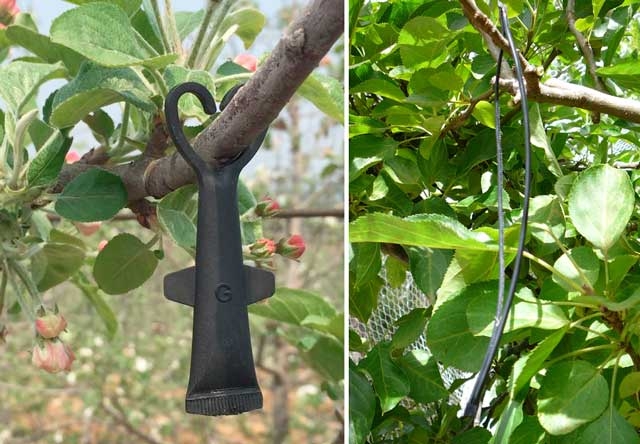How pheromones are identified (continued from last issue)
Samples of candidate pheromone are tested in wind tunnels and in traps in the field. If the candidate pheromone mixture is as good as a few virgin females then the pheromone is at least partly identified.
For the moth to recognize the pheromone it must be the right length (for OFM 12 carbons), must have the carbon-carbon double bond in the right position (position 8), and the blend of compounds with the right bends around the double bonds must be right.
Making it commercial
When all this basic work is done, then it is up to the industrial chemists to scale up the manufacturing process from a few tens of milligrams to kilograms for making monitoring lures and hundreds of kilograms if the compound is used for mating disruption.
Oriental fruit moth and codling moth pheromones are relatively simple to manufacture on large scale and can be made at a price which allows an affordable mating disruption product for the farmer.
Others, such as the more complex potato tuber moth pheromone are way too expensive to use in mating disruption technology.
Controlled release systems
Pheromones in their raw state are useless to the farmer and if left exposed would degrade in sunlight or evaporate and blow away in a matter of hours or days.
They must be enclosed in a controlled release system that gives protection from the elements, the right release rate, field life, point sources per hectare and be convenient for the farmer to apply.
Then the pheromone can become a practical tool in the pest management arsenal.
Uses of pheromones
Pheromone monitoring lures are useful and highly specific tools that when used properly, allow fruit growers to detect insect flights and pressure.
They are usually far more convenient than food lures that were used previously.
Pheromone mating disruption technology for the right target insect can be a magnificent tool for taking out the target pest without harming natural enemies or stirring up secondary pests like mites, or exposing farm workers to hazardous chemicals or fruit to residues.
How pheromone mating disruption works
In nature, female moths release pheromone perfumes to attract males for mating.
For codling moth, this happens just after sunset when there is just a little light in the evening sky. For OFM, it is a little earlier in late afternoon.
Males follow the pheromone trails upwind, turning back and forth in the plume. In this way, they can accurately reach the female.
(continued next month)
See this article in Tree Fruit August 2018




















